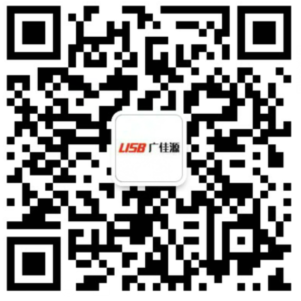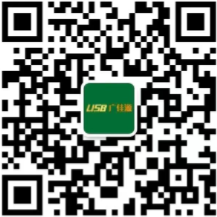 Mr. Chen:136-6225-2835
Mr. Chen:136-6225-2835
 Miss Chen:189-2385-0895
Miss Chen:189-2385-0895
Shenzhen Guangjiayuan Electronic Technology Co., Ltd
Mr. Chen: 136-6225-2835 (same WeChat account)
QQ: 979285705
Miss Chen: 189-2385-0895 (same WeChat account)
QQ: 2391552662
Chen Weiting :135-3824-4786 (same WeChat account)
Chen Weihao: 139-2459-4393 (same WeChat account)
Tel: 86-0755-33182327
Email: gjydz88@163.com
Website: www.usb-type.com
Address: Building 10, Hongxing Gebu Qixiang, Songgang Town, Bao'an District, Shenzhen, Guangdong Province
As a transmission standard, USB interface has always been the main data transmission mode when we use personal computers. From pocket USB flash disk to Portable storage device with amazing capacity, it relies on this standardized transmission mode, unified interface and unified transmission protocol, which is the main way for people to exchange data and information with each other except the Internet, USB interface is one of the Cornerstone laying the foundation for the efficient life brought by personal computers today. From the original USB Type A to today's USB type-c, the transmission standard has changed from generation to generation. Even if it is also a type c interface, there are huge differences between them. What secrets do they all have?

The USB Type-A interface, also known as USB Standard-A, is the initial design of the USB standard. It adopts a flat rectangular shape, and the Type-A interface is mainly used for host devices, including desktops, laptops, game consoles, media players, etc. Different USB standards (including USB 1.1, USB 2.0, and USB 3.0) share the same USB Type-A design - which means that, As long as the USB interfaces all use the same USB Type-A interface, they can be compatible with each other.

USB Type-B: Typically, the Type-B connector is plugged into the other end of the standard USB cable of a peripheral device (such as a printer, phone, or external hard drive). On peripheral devices, USB interfaces are referred to as B-type female connectors. However, due to the significant changes in the shape and size of peripheral devices, Type-B connectors and their respective ports have many different designs - such as being first used for USB 1.1 (also used for USB 2.0) and mainly used for connecting large peripheral devices (such as printers or scanners) to computers, as well as the original standards used in digital cameras The mini usb (or Mini-B USB) interface and micro usb (or Micro-B USB) interface of mobile phones and old portable drives, and the Micro usb 3.0 (or Micro-B USB 3.0) commonly used for Portable storage device.
The next generation of mainstream USB type-C interface, also known as USB-C, is a hardware interface form of Universal Serial Bus (USB). The biggest characteristic of its appearance is that its upper and lower ends are completely consistent. Compared with Micro USB, this means that users no longer need to distinguish between the front and back sides of USB, and both sides can be inserted.
The USB type-c specification 1.0 was released by the USB Implementers Forum (USB-IF) and completed in August 2014 [1]. The specifications are roughly the same as USB 3.1. But in reality, USB-C devices may not necessarily support USB 3.1 or Power Delivery. Since the release of the USB-C specification in 2014, many new 3C devices such as Android mobile devices, laptops, desktops, and even game consoles have started using this communication port.

USB-C interface size is 8.3 × 2.5mm, power transmission specification, wire standard for DC 5V, 5A, and connector for 3A - in terms of appearance, the size of the Type C interface and connector is roughly the same as the size of the Micro-B USB mentioned above. This means it is small enough to be applied to most peripheral devices. For Type-C, both ends of the USB cable are the same, allowing for reversible plug direction. Since 2015, USB-C has been widely used in many mobile phones and tablets. Many new storage devices also use USB-C ports instead of USB-B ports. Almost all devices that support USB 3.1 use the USB-C port. In addition, Type-C USB also allows bidirectional power supply, so in addition to charging peripheral devices, if possible, peripheral devices can even charge host devices in reverse.


Therefore, currently, what we lack is only the popularization of USB type-C interfaces for peripheral devices - a considerable proportion of laptops are already equipped with USB type-C interfaces - especially in lightweight laptops, where the USB type-C interface is almost their only choice. The thin body makes it difficult to use the USB Type-A interface, while the USB type-C interface can balance weight and speed, which is difficult for many users to accept, Actually, it's just a hassle of carrying an additional adapter.

Like the recently released Huawei MateBook 13 ultra-thin laptop, it has a very slim body with a thickest thickness of only 14.9mm. Its official weight is 1.3kg, and it provides a USB-C interface on both sides of the body that supports data transmission and charging, as well as a USB-C interface that supports data transmission and DisplayPort external connection. Due to considerations of light and thin body, as well as price and cost considerations, It does not use Type-A interface - and in exchange, it is a brand new slim book with a minimum cost of only 4999 yuan (the Macbook air, also a 13 inch slim book, also uses a full USB-C interface configuration).

In addition, as mentioned earlier, there is still room for optimization in the support of USB-C interfaces for peripheral devices today - in order to bring convenience to users, MateBook 13 provides users with a Type-C to Type-A adapter cable, which solves many users' needs for USB-A interfaces and is very thoughtful.
At the application level, the USB-C specification can even be used for audio transmission, but so far, it has not replaced the 3.5mm headphone jack on computers. Generally speaking, the current USB type-c interface is often used to connect DisplayPort and/or HDMI displays to devices, achieving tasks that traditional HDMI or DP interfaces can only complete - such a design, once popularized, is very useful as it means the completion of unified standardization, In the future, many functions will no longer require carrying multiple transmission lines to complete (however, the actual situation is that the implementation and support of protocols and standards is a complex game process between manufacturers, so this vision still needs to wait).

Of course, the most important function of USB-C and USB 3.1 still exists as a data transmission method, which mainly includes two transmission protocols. The default protocol for the USB type-c interface is USB 3.1, with a speed of 10Gbps, which is theoretically twice that of USB 3.0. The biggest factor preventing the popularization of USB Type-C is that the traditional USB 3.1 Type-A interface still has considerable usage demand and better device compatibility (after all, existing peripheral devices do not become USB Type-C interfaces overnight). However, the USB Implementers Forum (USB-IF) has defined the USB 3.1 Gen 1 standard as meeting the same interface and data signal rate as USB 3.0- therefore, when you see the USB 3.1 Gen 1 interface, it basically operates at the same 5Gbps speed as USB 3.0, while USB 3.1 Gen 2 can achieve a data signal rate of 10Gbps, twice that of USB 3.0.
The most useful USB-C transmission protocol for Thunderbolt 3 is probably even Thunderbolt 3- due to its two in one integration feature, the third-generation Thunderbolt protocol can not only transmit data at a bidirectional speed of 40 Gbit/s (20 Gbit/s+20 Gbit/s, especially for external high-speed networks), but also be compatible with Mini DisplayPort devices directly connecting to the Thunderbolt interface to transmit video and sound signals, with its efficient transmission rate, Make the type c interface more effective in use.

In short, the USB type-C interface has the characteristics of being small, lightweight, and capable of high-speed transmission. It is playing an increasingly important role in the application of laptops and electronic devices. In the pursuit of efficiency and speed today, high-speed transmission interfaces not only save a lot of time and cost, but also allow us to spare time to do more things, which is of great significance for improving user experience - as an efficient and convenient interface, USB type-c naturally has a bright future, but Type-A and Type-B interfaces will still exist for some time.
Source of this article: Pacific Computer Network
Contact person:
Mr. Chen 136-6225-2835 (same WeChat account)
Miss Chen 189-2385-0895 (same WeChat account)
Chen Weiting 135-3824-4786 (same WeChat account)
Chen Weihao 139-2459-4393 (same WeChat account)
Address:
Building 10, Hongxing Gebu Qixiang, Songgang Town, Bao'an District, Shenzhen, Guangdong Province
 |
 |
| Technology 1 | Technology 2 |